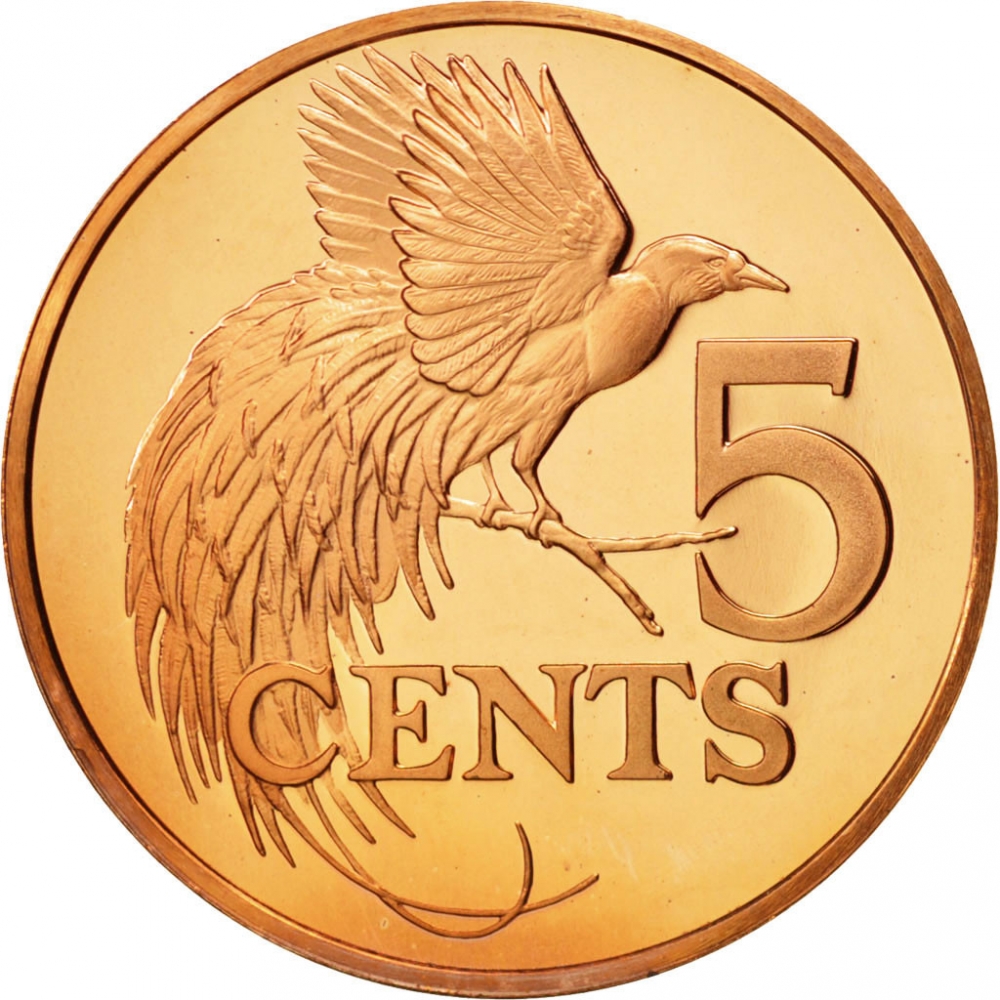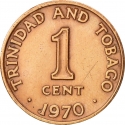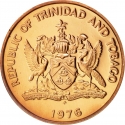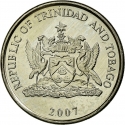Description
The Republic of Trinidad and Tobago is the southernmost island country in the Caribbean.
Obverse

|
Coat of arms of Trinidad and Tobago. Date and mintmark (if any) below.
The coat of arms of Trinidad and Tobago was designed by a committee formed in 1962 to select the symbols that would be representative of the people of Trinidad and Tobago. The committee included artist Carlisle Chang (1921–2001) and carnival designer George Bailey (1935–1970).
The palm tree crest at the top of the coat of arms was taken from Tobago's coat of arms before it was joined in political union with Trinidad. The shield comprises the same colours (black, red, and white) as the nation's flag. The gold ships represent the Santa María, La Niña, and La Pinta: the three ships Christopher Columbus used on his journey to the “New World”. The two birds on the shield are hummingbirds. Trinidad is sometimes referred to as the “Land of the Hummingbird” because 18 different species of hummingbird have been recorded on the island. The two larger birds are the Scarlet Ibis (left) and the Cocrico (right), the national birds of Trinidad and Tobago. Below the Scarlet Ibis are three hills, representing the Trinity Hills in southern Trinidad, which, it is believed, convinced Columbus to name the island after the Holy Trinity. The island rising out of the waters beneath the Cocrico represents Tobago. Below these birds is the nation's motto, "Together We Aspire, Together We Achieve."
REPUBLIC OF TRINIDAD AND TOBAGO
TOGETHER WE ASPIRE TOGETHER WE ACHIEVE
FM
1976
|
Reverse

|
Depicts a Greater bird-of-paradise with the denomination on the right.
The greater bird-of-paradise (Paradisaea apoda) was named "legless bird-of-paradise", because early trade-skins to reach Europe were prepared without wings or feet by the indigenous New Guinean people; this led to the misconception that these birds were beautiful visitors from paradise that were kept aloft by their plumes and never touched the earth until death.
The greater bird-of-paradise is distributed to lowland and hill forests of southwest New Guinea and Aru Islands, Indonesia. The diet consists mainly of fruits, seeds and small insects. A small population was introduced by Sir William Ingram in 1909-1912 to Little Tobago Island of West Indies in an attempt to save the species from extinction due to overhunting for plume trades. The introduced populations survived until at least 1966, but most likely are extinct now. The bird still appears on Trinidad and Tobago's $100 bill.
|
| Edge |
|
Characteristics
| Material |
Bronze |
| Weight |
3.31 g |
| Diameter |
21.2 mm |
| Thickness |
1.25 mm |
| Shape |
 round
round
|
| Alignment |
Medal
|
| Mints |
Franklin Mint (FM) Royal Mint
|
Related coins
Bronze, 1.95 g, ⌀ 17.8 mm
My Collection
My Exchange
Bronze, 1.95 g, ⌀ 17.8 mm
My Collection
My Exchange
Cupronickel, 3.5 g, ⌀ 20 mm
My Collection
My Exchange
|









